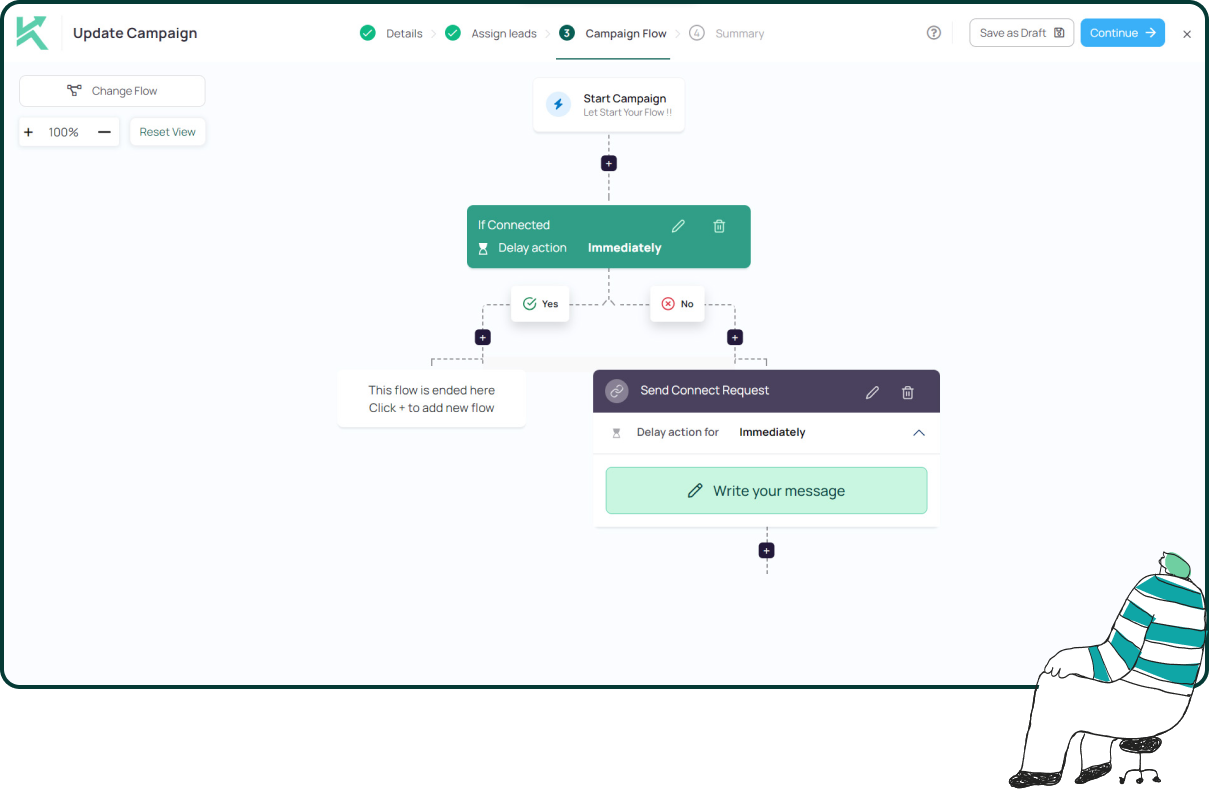In the fast-paced world of sales, one of the most critical aspects of building successful relationships with potential customers is effective follow-up messaging. Sales Development Representatives (SDRs) play a pivotal role in nurturing leads and converting them into paying customers. In this comprehensive guide, we will explore the art of crafting compelling follow-up messages that can help SDRs close deals and achieve sales success.
Personalizing Follow up Messages throughout the Sales Cycle
The sales cycle comprises several stages, from the initial contact to closing the deal. Each stage requires a tailored approach to follow-up messaging. A well-timed and personalized follow-up can guide prospects through the sales funnel, increasing the likelihood of conversion. The power of personalization in sales development is the key to capturing the prospect’s attention. Before reaching out, conduct thorough research on the prospect’s pain points, needs, and preferences. Tailor your messages accordingly to show that you understand their unique challenges and can offer valuable solutions.
Best Practices for Follow-Up Messaging:
For SDRs, mastering the best practices for follow-up messaging is essential to stand out in a competitive landscape. In this section, we will explore the key strategies and best practices that empower SDRs to excel in follow-up messaging, building strong connections with prospects, and achieving remarkable sales success.
- Get the Timing Right
Responding promptly after the initial contact shows professionalism, attentiveness, and a genuine interest in the prospect’s needs. Research indicates that the chances of connecting with a lead significantly decrease with each passing hour, making a swift response imperative.However, it’s equally important to strike a balance and avoid being too aggressive, as this may risk annoying the prospect and lead to disengagement. By timing follow-ups strategically and finding the right rhythm, SDRs can keep prospects engaged, nurture relationships, and move them closer to conversion throughout the sales cycle. - Craft Compelling Subject Lines
SDRs must master the art of follow-ups. As the first point of contact, subject lines hold immense power in determining whether your email gets opened or relegated to the depths of the inbox.To capture the prospect’s attention and increase email open rates, subject lines must be attention-grabbing, relevant, and value-driven. Avoid generic subject lines that offer no context or fail to convey the message’s essence. Instead, focus on the unique value proposition your product or service offers and use the subject line as a teaser for the content inside. - Keep it Concise and Focused
SDRs must prioritize clarity and brevity, delivering the main message without overwhelming the prospect with unnecessary details. By getting to the point quickly and concisely, SDRs increase the chances of their follow-up emails being read and understood.Utilizing bullet points or numbered lists can further enhance readability, allowing prospects to absorb key information efficiently. By respecting the prospect’s time and delivering focused messages, SDRs can maintain engagement and pave the way for meaningful interactions throughout the sales cycle. - Value Proposition Reinforcement
By aligning the value proposition with the prospect’s specific pain points and needs, SDRs demonstrate a deep understanding of their challenges and position themselves as a solution provider.Reinforcing the value proposition with real-life examples and success stories bolsters credibility and trust, assuring the prospect of the offering’s effectiveness. Striking a balance between subtle repetition and overbearing promotion, SDRs can build a compelling case for their solution, increasing the likelihood of successful conversions and forging long-lasting customer relationships. - Call-to-Action (CTA)
SDRs must use action-oriented language that motivates prospects to engage, whether it’s scheduling a call, booking a demo, signing up for a trial, or downloading valuable resources. By providing specific and enticing CTAs, SDRs increase the chances of prospects taking the desired action.Additionally, incorporating a sense of urgency, where appropriate, can prompt prospects to act promptly. A strong CTA is a bridge that connects interest to action, making it a pivotal element in driving successful follow-up interactions and ultimately achieving sales success. - Multi-Channel Follow-Up Strategies
SDRs can complement effective follow-up emails with phone calls, personalized video messages, social media interactions, or even direct mail. Each channel offers unique advantages; phone calls allow for direct and immediate engagement, personalized videos add a human touch, and social media fosters informal interactions.By integrating various channels strategically, SDRs can cater to diverse preferences, increase response rates, and create a cohesive and personalized follow-up experience that resonates with prospects throughout the sales cycle. - A/B Testing and IterationA/B testing involves creating two or more variations of a message, such as different subject lines or CTAs, and sending them to different segments of the audience. By analyzing the performance metrics of each variation, SDRs can identify what resonates best with their target audience and refine their approach accordingly.Iteration involves continuously optimizing follow-up messages based on the insights gained from A/B testing and real-time data.
Conclusion
Mastering the art of follow-up messaging is essential for Sales Development Representatives (SDRs) to navigate the intricacies of the sales cycle successfully. The key lies in understanding the significance of timing, crafting compelling subject lines, keeping messages concise and focused, and reinforcing the value proposition throughout the sales process. With these best practices in place, SDRs can build strong relationships with prospects, drive sales growth, and foster long-lasting customer connections, ultimately achieving remarkable success in their roles.
Stay tuned with Konnector Blog for more interesting and informative articles!

11x Your LinkedIn Outreach With
Automation and Gen AI
Harness the power of LinkedIn Automation and Gen AI to amplify your reach like never before. Engage thousands of leads weekly with AI-driven comments and targeted campaigns—all from one lead-gen powerhouse platform.






